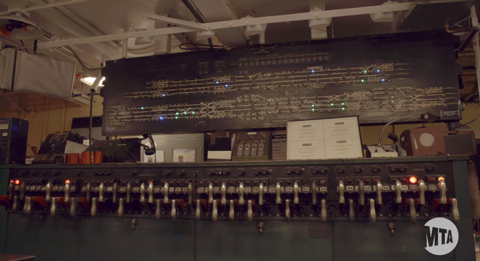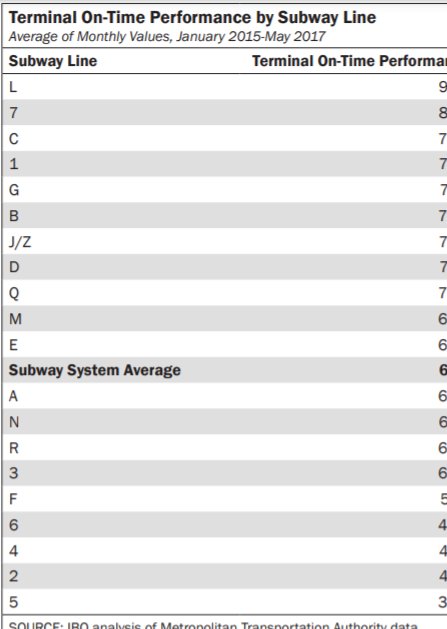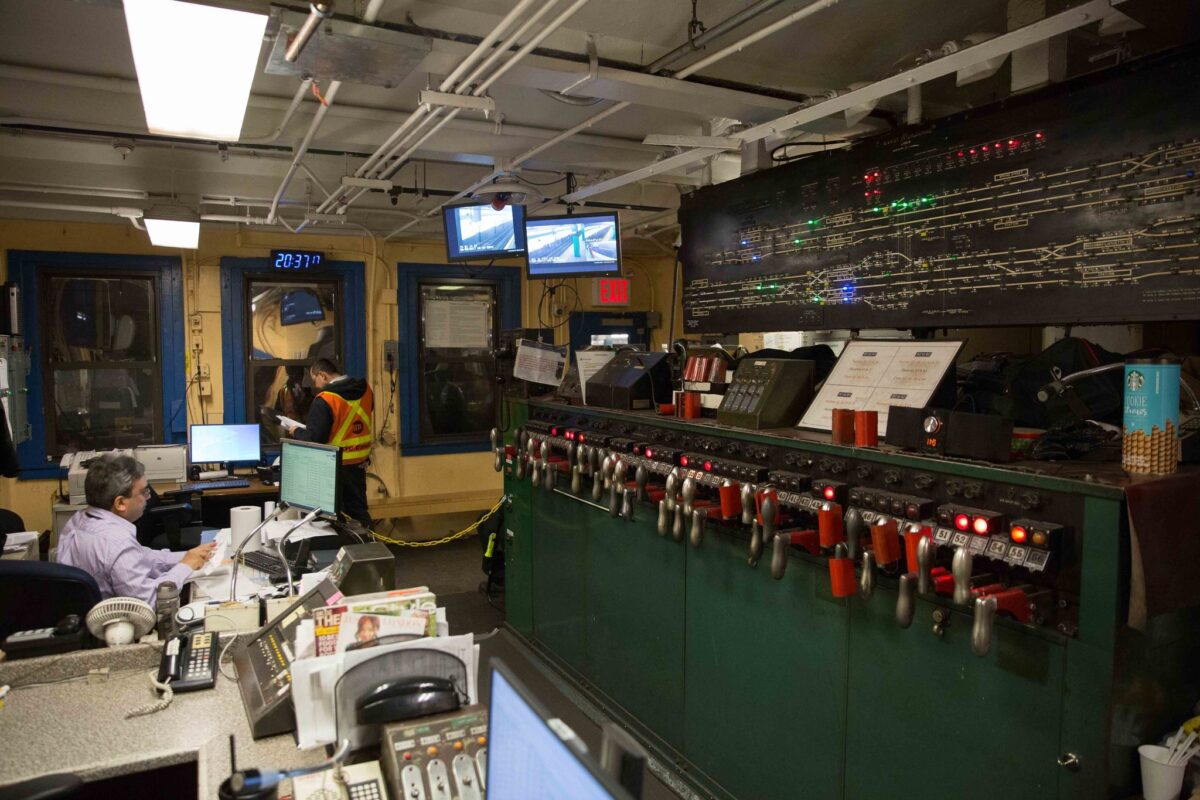Analyzing the NYC Subway Delays and Its Solutions
Abstract
The New York City Subway is one of the busiest subways around the world. This subway system contains 36 rail lines and 472 stations, which were mostly built in the 1940’s. With such a huge transit system there comes big responsibilities and problems. One of the biggest issues the NYC subway system faces is the constant changes on the On-Time Performances caused by the outdated signaling system. This laboratory discusses what causes the NYC subway delays.
Introduction
:no_upscale()/cdn.vox-cdn.com/uploads/chorus_asset/file/11471145/Screen_Shot_2018_06_03_at_9.32.04_PM.png)
The New York’s City Subway operates on a signaling system known as the block system (shown in Figure 1). This system was established during the 1930s. This system is very similar to city street traffic systems. Each block is around 1000 feet long and follows green, yellow, and red signals (Greenberg). This system enables train to keep a distance from each other to prevent subways from crashing to one another. Although this system keeps the subways running, it does not keep it running on time. According to Fitzsimmons from The New York Times, the signal problems are known to be the second most common reason for week delays (Fitzsimmons, 2017).
Discussion
The New York City Subway is one of the biggest transit networks in the country with over one million riders daily. Although this system is vital to New Yorkers, it is running on technology that predates World War II. This is seen by riders in the station’s infrastructure, but something rider often oversee is that is not only the stations infrastructure that is old. The system in which the subways run is also outdated. The system works, but it is not optimal to the needs of growing NYC population. Most subways around the world are modernized, yet the NYC subway must be monitored by workers 24/7 in order to make sure everything is going as it should.

There are many problems with the current signaling system to talk about. The trains have to be monitored from the interlocking stations 24/7. The interlocking stations were built in the 1930’s and has not been completely replaced or modernized. The equipment of the interlocking stations (shown in the picture to the left). Is still the original equipment. When in need of replacement, the parts are extremely hard to find as these parts are no longer being produced (MTAinfo, 2015). The traditional technology used for the subway signaling system is known as the Fixed Block system. This system does not track the exact location of each train. Rather has a detection resolution which is where the signaling lights come in play. This signaling lights slows down the trains if it moves into buffer. This then leads to trains being delay. In addition, this system is not optimal as it does not provide an exact location of each train to those monitoring the interlocking stations. Lastly, one of the main components of the system, the cables, are extremely outdated. The cabling in the interlocking stations which help control the subway system are cloth wiring. (MTAinfo, 2015). These wires don’t exactly impose a risk; however, they can cause electrical faults in the system. In 2019, the MTA reported that there was an increase in their On-Time Performance (OTP) from previous years and the highest since 2013. Although, this may seem like a high number, there was still a

20% rate of delays, not counting previous years (MTA, 2020). As shown in the graph, the delays of the MTA have been on a constant spike over the years. There clearly needs to be an updating in the current signaling system of the subway which has contributed to the low OTP.
Conclusion
The MTA has become aware of the problems that the current system has and has established a plan, may be affected after the pandemic, to transform the aged system. The reform to the system is clearly needed to keep up with the New York City population. This new system is the Communications-based train control (CBTC). This is a modernized system that would include new signals and modernized interlockings. With this new system the subway will become more reliable as it will allow cars to run closer together, while still being safe. This system will also replace the old hardware and transform it into software. In addition, this system will increase the capacity of trains running at the same time (MTA).

Currently, the system has been established in two subway lines. The lines that are currently using thee CBTC systems are the L line and No. 7 line. These lines are currently considered the most reliable lines with over 80% OTP (Figure 4).
The MTA subway system needs urgent modernization throughout the entire 36 lines. There have been positive outcomes in the two lines that have established the new system demonstrating that the CBTC system is one optimal and reliable option for the current system.
References
Greenberg, Bernard S. Subway Signals: A Complete Guide, www.nycsubway.org/wiki/Subway_Signals:_A_Complete_ .
Barone, Vincent. “MTA Signal System Overhaul Would Require Extensive Disruptions.” AmNewYork, 14 Oct. 2019, www.amny.com/transit/mta-signal-upgrades-1-36701525/.
Fitzsimmons, Emma G. “Key to Improving Subway Service in New York? Modern Signals.” The New York Times, The New York Times, 1 May 2017, www.nytimes.com/2017/05/01/nyregion/new-york-subway-signals.html?_r=1.
Peçanha, Sergio. “The Subway Got a Little Faster. How Did Your Line Do?” The New York Times, The New York Times, 23 June 2019, www.nytimes.com/interactive/2019/06/23/nyregion/which-subway-lines-improved-the-most.html.
“Transform the Subway.” Fast Forward, fastforward.mta.info/transform-the-subway.
Treffeisen, Alan. “How Much Time and Money Are New York City Subway Riders Losing to Delays?” New York City Independent Budget Office, Oct. 2017, bit.ly/2yegGwO.
Mtainfo, “CBTC: Communications-Based Train Control”. YouTube. Jul. 2015
Levy, Alon. “NYC’s new transit chief has a plan to fix the subway—can it succeed?” New York Curbed. Jun. 4, 2018. https://ny.curbed.com/2018/6/4/17423376/nyc-subway-andy-byford-fast-forward-analysis.


